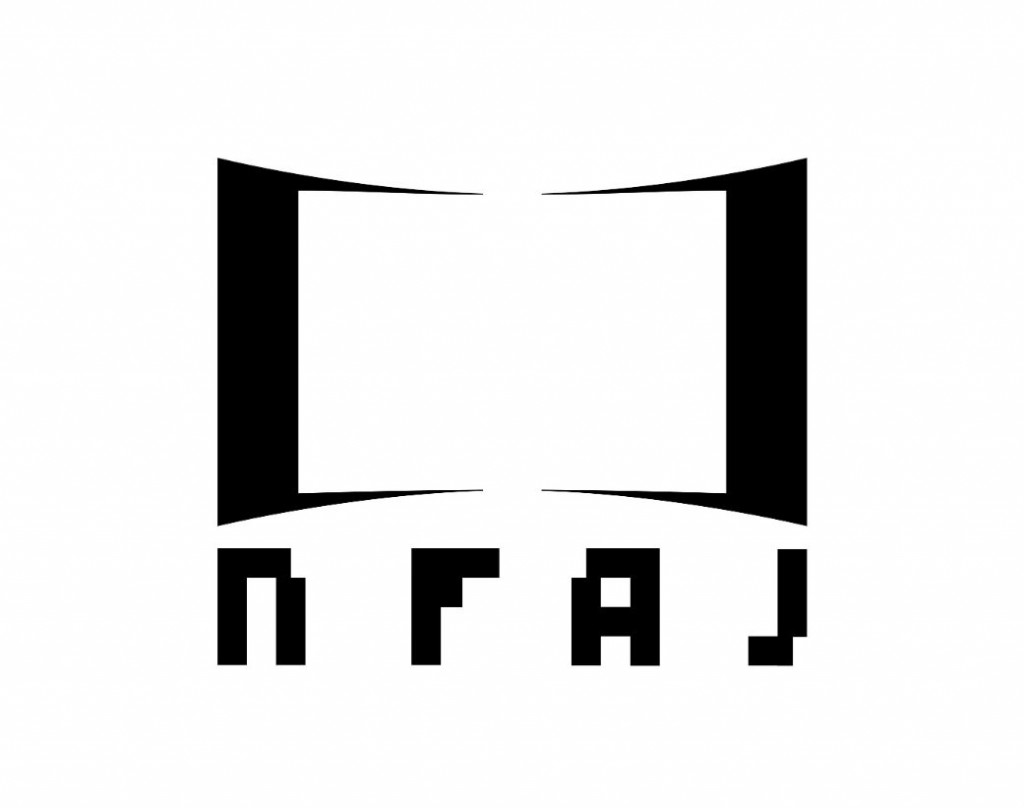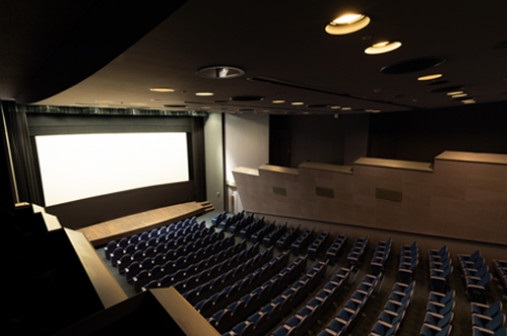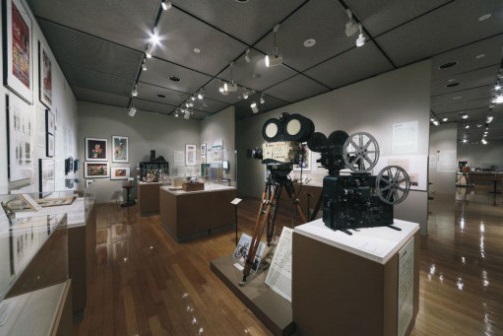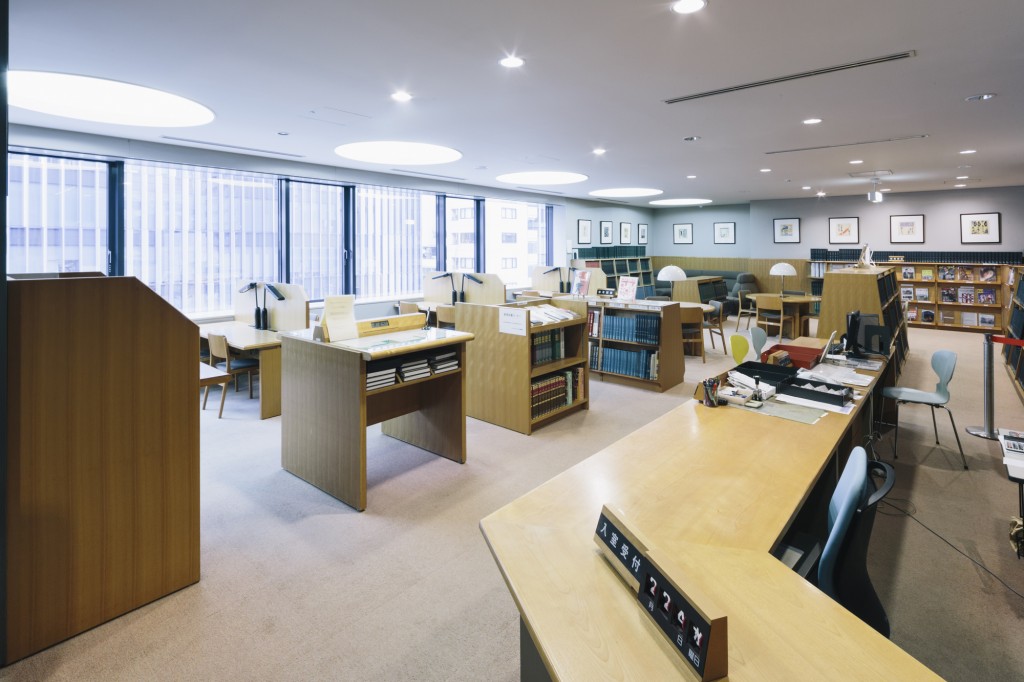ABOUT NFAJ
The one and only national institution of films in Japan
National Film Archive of Japan (NFAJ) started out in 1952 as the film library section of the National Museum of Modern Art (later The National Museum of Modern Art, Tokyo: MOMAT).
The section was expanded in 1970 to become National Film Center (NFC), which eventually got independent of MOMAT in 2018 to become NFAJ as one of the six members of the Independent Administrative Institution National Museum of Art.
NFAJ, the only national institution of films in Japan, is promoting motion picture culture through collection, preservation, restoration, research, screenings and exhibitions of domestic and overseas films and related materials.

Symbol and Logo
Our new symbol mark expresses the two-way movements of projecting and receiving light, both centripetal and centrifugal force in action. The inner rectangle is close to the aspect ratio of standard frame size and the outer rectangle is close to wide screen (1:1.66).
The typography of the abbreviation NFAJ goes back to the origins of writing by showing how only a few elements are needed to construct a letter. It also shows NFAJ’s adaptability towards digital technology.

Functions of NFAJ
NFAJ has three functions as follows:
1. The base of preserving and presenting motion picture heritage.


NFAJ is conducting collection, preservation, restoration and academic research of films (including digital cinema) and related materials, while presenting its collection to the public. For instance, we screen the films and exhibit the materials from our collection in our theaters and galleries, loan the films for various screening events, and provide media and other organizations with the copies of the materials.
2. The base of education related to motion picture heritage.
NFAJ provides a wide variety of audiences with the opportunities, such as “Kids’ Cinema” and “Circulation Program”, to learn arts, culture, history and society through films, while developing and exchanging human resources involved in film preservation and education.

3. The base of international cooperation through motion picture heritage.
As a member of the International Federation of Film Archives (FIAF), the international organization of film preservation institutions, NFAJ cooperates with other members to enhance motion picture heritage of the world and to internationally organize screening programs, lectures, and symposiums.
